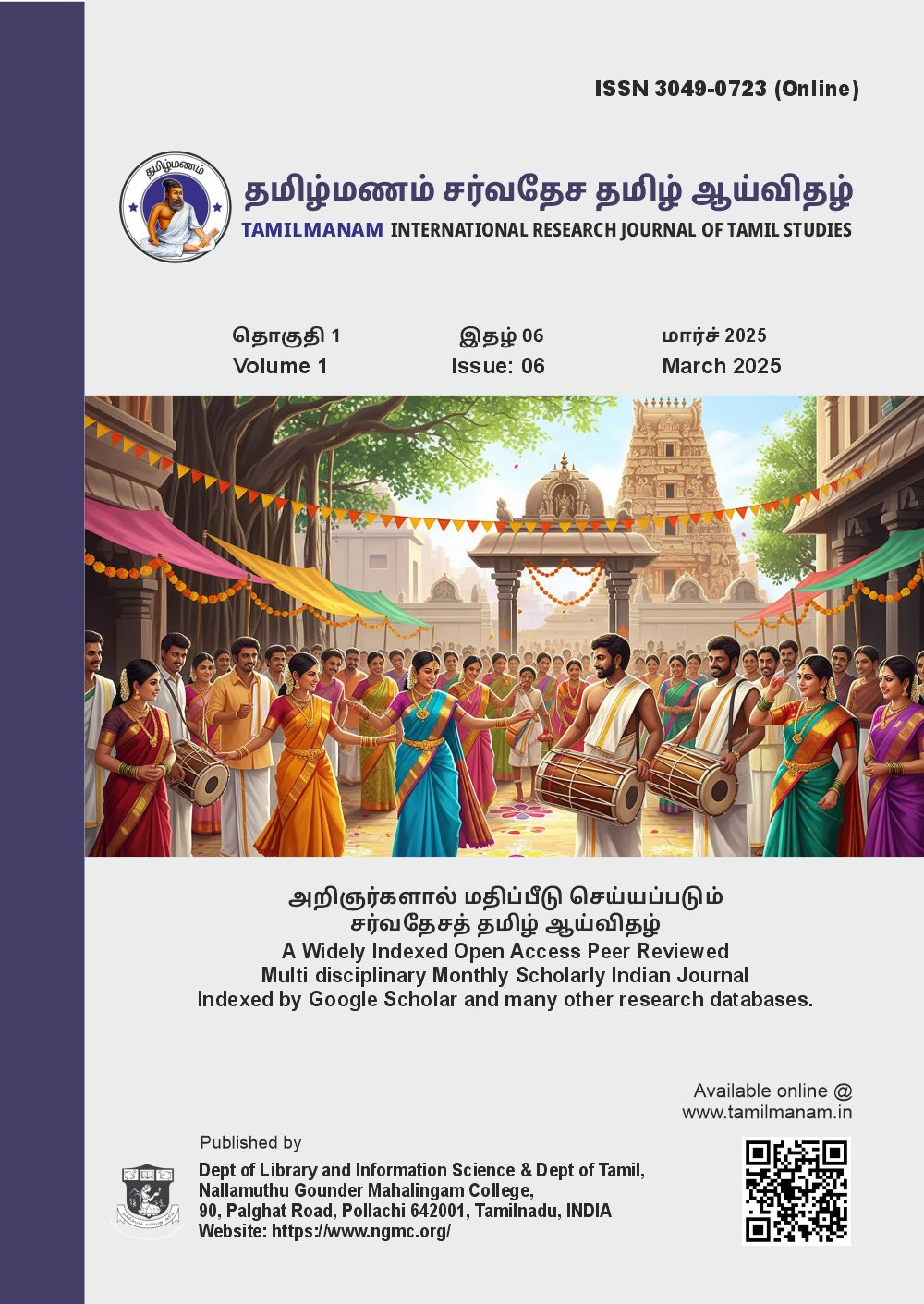History of Devi Fort: The Evolution of the Architectural Heritage of Nagapattinam District
தேவி கோட்டையின் வரலாறு: நாகை மாவட்டத்தின் கட்டிடக்கலைப் பாரம்பரியத்தின் பரிணாமம்
DOI:
https://doi.org/10.63300/7atdba15Abstract
Tamil Nadu has been considered for its unique art and architecture since the Sangam period. The temples, palaces and other structures found here help in understanding the architectural techniques of the Tamils. The Indian architectural tradition is generally divided into two categories: one, the palaces, palaces, palaces, shops, buildings in cities and dwellings in rural areas related to documents; the other, the temples related to devotion. In modern times, temple-centric studies in Tamil Nadu have mostly been done in the eastern period, but it is recognized that studies on fort structures should not be overlooked. For this reason, this article is written based on the data available in an attempt to fully reveal the history of Devikottai in Nagapattinam district.
Downloads
References
1. சங்கக்காலம் மற்றும் தமிழ்நாட்டின் கலைகள்: விவரக் கோப்புகள் (2000).
2. தமிழர்களின் கட்டிடக்கலை: ஒரு பகுப்பாய்வு (2010).
3. தேவிகோட்டையின் வரலாறு மற்றும் கட்டிடங்கள்: கோட்டை நுட்பங்கள் (2015).
4. Dalrymple, W. (2003). White Mughals: Love and betrayal in eighteenth-century India. Viking.
5. Subramanian, L. (2010). South India, 1600-1800: Political and economic development. Allied Publishers.
6. Brown, A. (2015). Local Materials in Ancient Fortifications. Journal of Archaeological Science, 42, 112-130.
7. Davis, R. (2008). Forts as Historical Evidence. History Today, 58(3), 34-40.
8. Jones, P. (2005). Architectural Styles of South Indian Forts. Journal of Art History, 22, 78-92.
9. Smith, L. (2010). Defensive Structures in Medieval India. War & Society, 29(1), 56-72.
10. White, M. (2018). Forts as Tourist Attractions. Tourism Management, 68, 234-249.
11. Wilson, E. (2012). Forts and Community Identity. Cultural Studies, 26(4), 567-584.
Downloads
Published
Issue
Section
License
Copyright (c) 2025 Sharon K, S Veerakannan (Author)

This work is licensed under a Creative Commons Attribution 4.0 International License.
Our journal adopts CC BY License Creative Commons Attribution 4.0 International License http://Creativecommons.org//license/by/4.0/ . It allows using, reusing, distributing and reproducing of the original work with proper citation.






